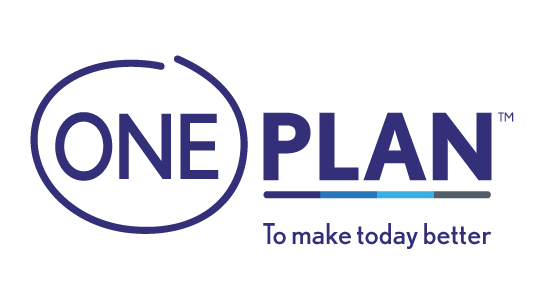We break down the triage system in the emergency department and how Oneplan Health Insurance comes into play.
The emergency room triage process plays a critical role in determining the order in which patients are treated based on the severity of their condition. What you may not realise is that, when it comes to your Oneplan Health Insurance policy, these triage levels are an important factor in determining how you claim from your policy.
Before we get into how to claim from policy based on your triage level, let’s first break down the meaning of each level.
Emergency Department Triage Levels
Emergency room triage levels categorize patients into different priority levels with different waiting times based on the severity of their condition. The most common triage levels used in ERs are:
Red (Life-threatening):
Patients with life-threatening conditions that require immediate medical attention fall into this category. Examples of “red” conditions include severe trauma, heart attack, stroke, or respiratory distress. These patients are treated as a top priority and receive immediate medical intervention.
Orange (Urgent):
Patients with potentially serious conditions that are not immediately life-threatening but require urgent medical attention fall into this category. Examples of “orange” conditions include moderate pain, lacerations, or severe infections. These patients receive treatment after “red” patients, but their treatment is still prioritized based on the severity of their condition.
Yellow (Non-Urgent):
Patients with conditions that are not life-threatening and can wait for a longer period of time fall into this category. Examples of “yellow” conditions include minor injuries, sprains, or simple fractures. These patients are seen after “red” and “orange” patients, and their treatment is based on the availability of resources.
Green (Minor):
Patients with minor conditions that do not require immediate medical attention fall into this category. Examples of “green” conditions include mild pain, minor cuts, or cold and flu symptoms. These patients are seen after “red”, “orange”, and “yellow” patients, and their treatment may be delayed based on the availability of resources.
How Oneplan Health Insurance Comes into Play
Although our Health Insurance plans are comprehensive and will cover you if you go to the emergency room, the coverage for each triage level may vary depending on the specific policy guidelines of your plan.
It’s important to note that, for accidents, Oneplan covers all triage levels under the Casualty Accident Benefit up to your plan’s limit. This applies whether you are triaged as red or green.
For illness, however, there are some nuances that affect whether you claim from the Day-to-Day or Casualty Illness Benefit. Let’s take a look:
Red (Life-threatening):
This will always fall under your Casualty Illness Benefit, meaning you can claim up to your plan’s limit and we will cover that cost.
Orange (Urgent):
In terms of claiming from Oneplan, red and orange triage levels are essentially the same.
You will claim from your Casualty Illness Benefit up to your plan’s limit. The only difference with orange is that your condition is not life-threatening so you will likely wait longer to be treated than if you were in the red triage level (unfortunately this is based on the emergency room capacity and response times – we have no control over this).
Yellow (Non-Urgent):
This triage level is different from the others because the benefit you claim from may change according to your final diagnosis and treatment. Initially, you will need to claim from your Day-to-Day Benefit because illnesses under the yellow triage level are still considered treatable by a GP.
However, if you are in your consultation and are told that your condition is more serious than initially stated, you can phone our friendly service team and let them know so that they can transfer your claim onto your Casualty Illness Benefit.
For example, if you come into the emergency room complaining about shortness of breath and are initially triaged as yellow, but then in your consultation you are put onto a nebuliser after being diagnosed with pulmonary fibrosis, your claim will be transferred from your Day-to-Day Benefit to your Casualty Illness Benefit.
Green (Minor):
This will always fall under your Day-to-Day Benefit. If you are triaged as green, it means that you have gone to the emergency room to seek treatment for an illness that could be treated by your GP instead. In this case, you can still claim from your Day-to-Day Benefit at the emergency room, but it’s important to note that you will likely end up paying more out-of-pocket than if you had waited to consult with your GP.
Some Important Things to Know
Casualty Illness Benefit vs Illness In-Hospital Benefit
Many people get confused when it comes to these two benefits, especially when they are admitted to hospital after being triaged in the emergency room.
These two benefits are separate from each other and have separate limits; however, if you are admitted to hospital after being treated as a red or orange triage case, we will typically transfer your claim from your Casualty Illness Benefit to your Illness In-Hospital Benefit (depending on your plan). In other words, the two claims would be merged into one, so you wouldn’t have to claim for your emergency room visit and your hospital stay separately.
Exclusions and Waiting Periods
If your plan stipulates any generally excluded illnesses, or you are still within your 12-month exclusion period for a specified illness, you will not be able to claim from us if you visit the emergency room for treatment related to the illness(es).
Wrapping Up
As always, our goal is to make insurance simple, so we hope this article shed some light on the triage process and the process you will need to follow when you claim from us.
And remember, if you’re ever unsure about what you’re covered for or which benefit to claim from, you can always reach out to our friendly team who will be happy to assist you, or ask us to call you and we’ll get in touch.
Your Hassle-Free Insurance Family,
Oneplan




